Ancient Metal Structure Has Baffled Researchers for Decades – They Finally Have the Answer
For centuries, a mysterious iron pillar in Delhi, India, has captivated scholars and researchers due to its unique properties. This ancient metal structure has withstood the elements without rusting for over 1,600 years, a feat that baffled the scientific community.
The iron monument’s complexity has led to varying theories about its origin, with some suggesting it may have been created by an ancient civilization that possessed an advanced understanding of metallurgy. However, scientists from an Indian university believe they have finally solved the mysteries surrounding the monument.
The Delhi Iron Pillar
Standing tall in the central courtyard of the Qūwat-ul-Islām mosque in the Quṭb Mīnār complex in Mehrauli, Delhi, is an awe-inspiring iron pillar inscribed with Sanskrit text. The monument stretches up to an impressive 23.5 feet and weighs around 6 tons.
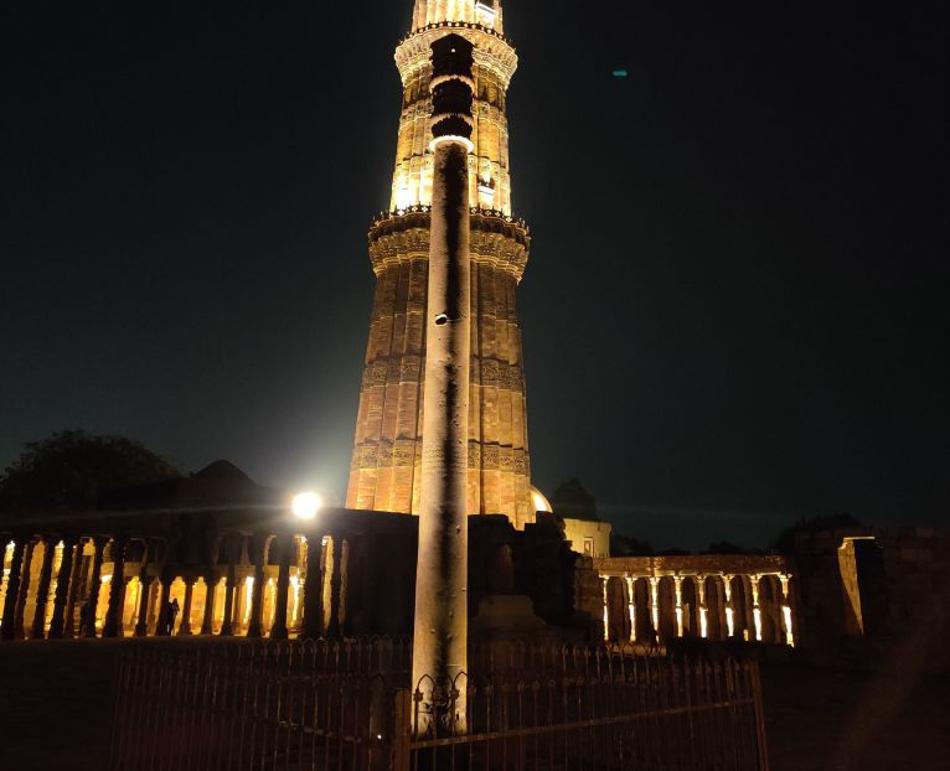
Source: Pallava Bagla/Corbis via Getty Images
Researchers are intrigued by this unique pillar’s inability to rust despite being created sometime around the 4th or 5th century.
The Origin Story of the Delhi Pillar
According to surviving legends, Dehli’s Iron Pillar was constructed during the Gupta Empire, commissioned by King Chandragupta II, also known as Vikramaditya.
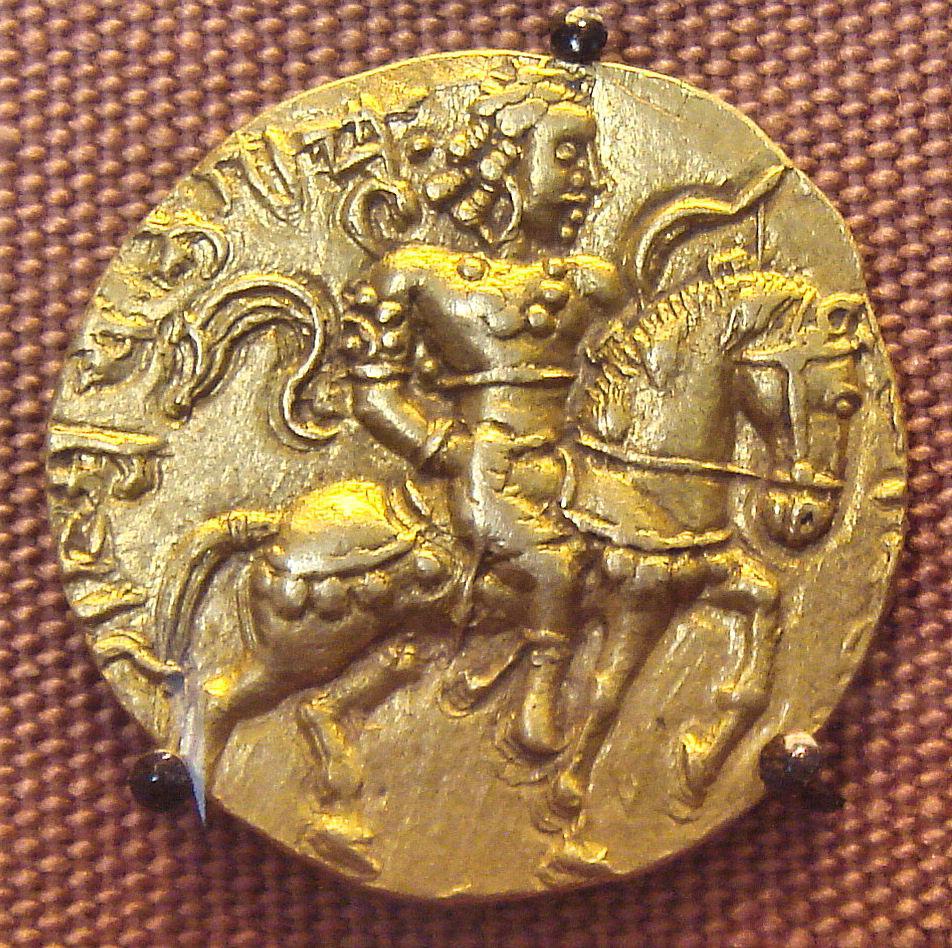
Source: Wikimedia
As per the tale, the enormous metal pillar stood in the Varaha Temple of Udayagiri Caves, near Vidisha in Madhya Pradesh. It was a monument dedicated to the revered Hindu deity Lord Vishnu.
Delhi Pillar Was Once Used as an Astronomical Tool?
Several other theories surround the construction of the unique iron pillar. One alternative suggests it was used by Varāhamihira, a renowned astronomer in King Vikramaditya’s court.
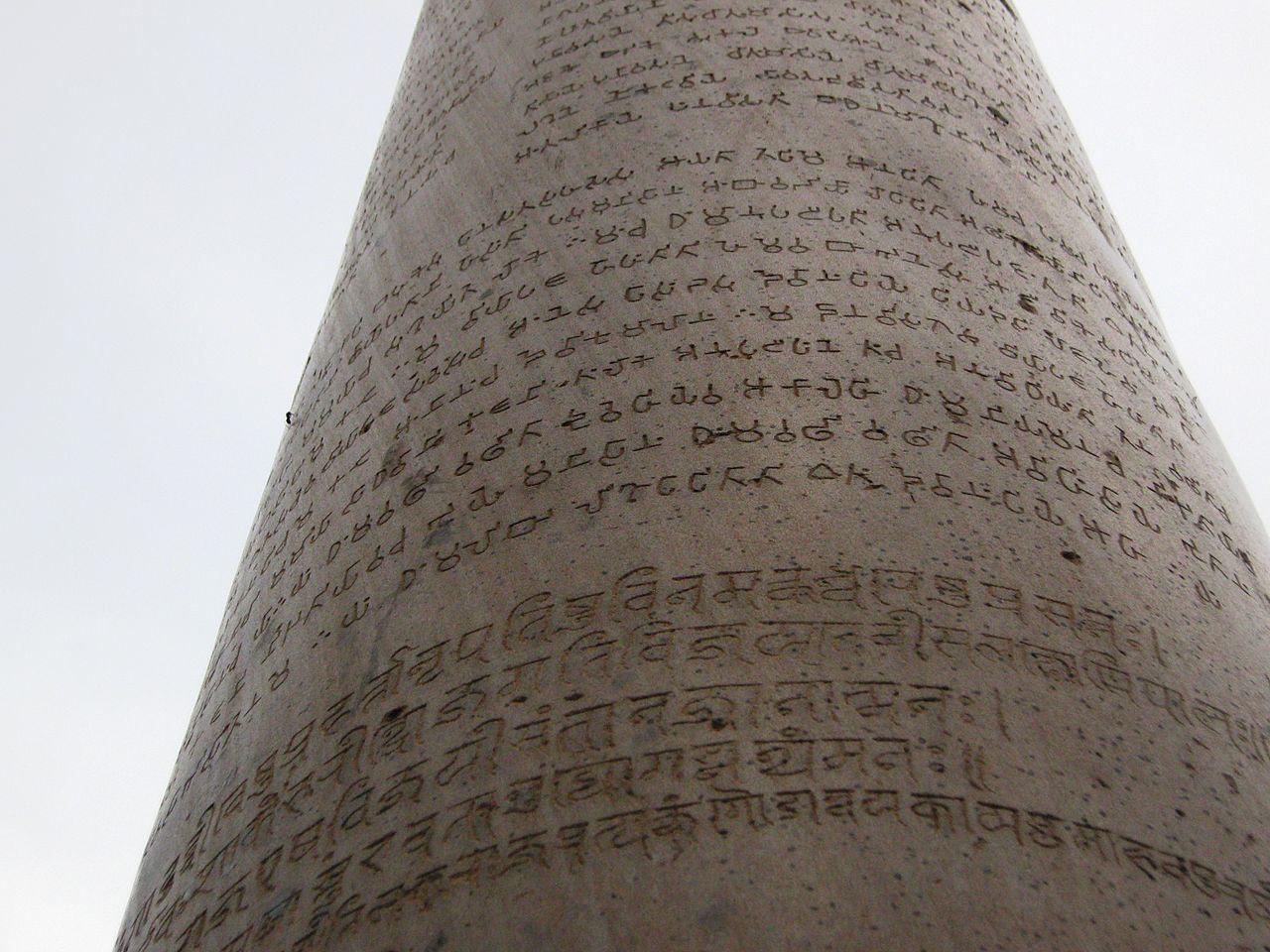
Source: Wikimedia
According to Vikramjit Singh Rooprai, a heritage activist and educator, “One of his books, the ‘Surya Siddhanta,’ details methods for calculating celestial positions, eclipses, and other astronomical phenomena—and it is believed that he used a tall pillar in his calculations.”
The Mysterious Origin of the Dehli’s Iron Pillar
The mysterious nature of the iron pillar’s origin and its remarkable anti-rust properties have fascinated researchers for centuries.
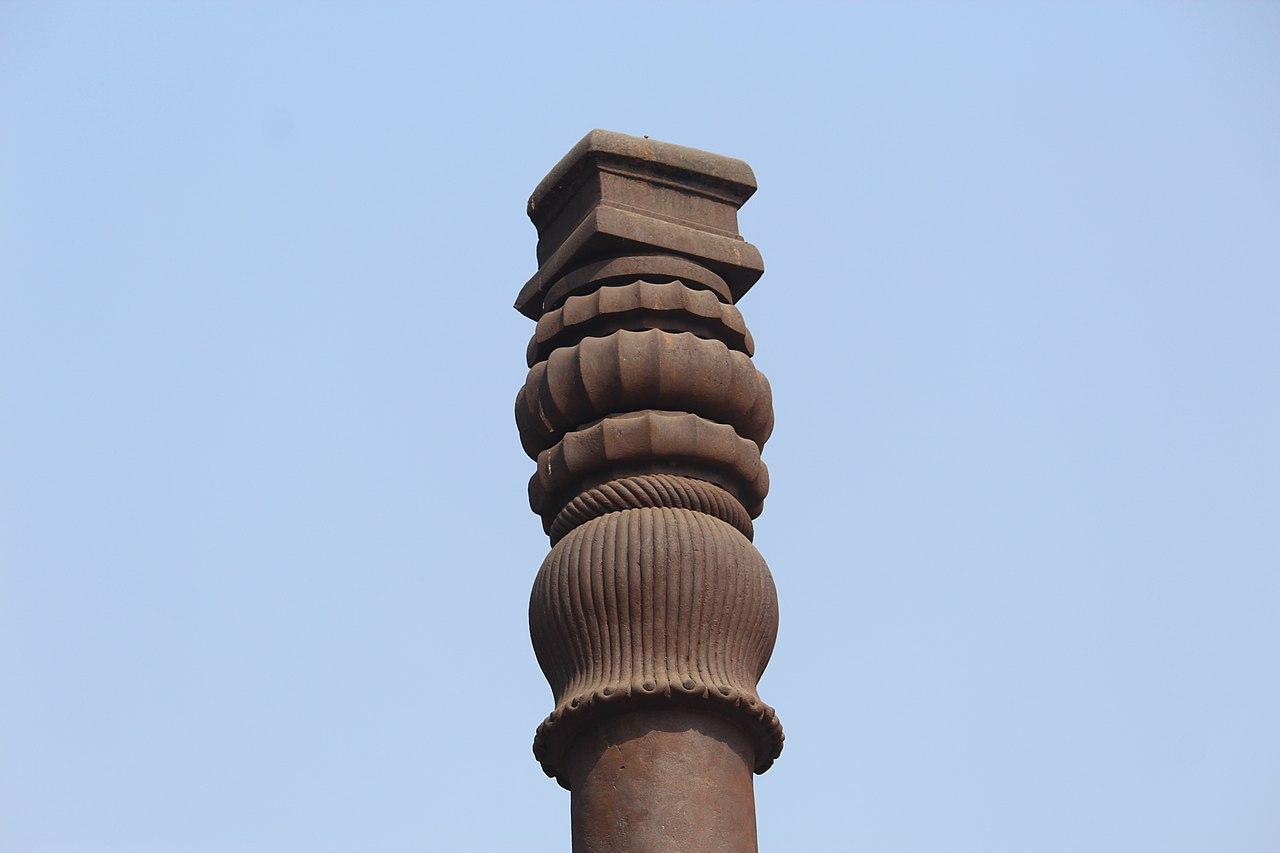
Source: Wikimedia
Those who have seen the enigmatic monument in person claim it’s in pristine shape with no visible signs of wear and tear despite being over 1,600 years old. Given its intense heat and high foot traffic, scientists are baffled by how it remains so resilient to deterioration.
Monument of Seven Metals
One account attempting to explain the pillar’s unique properties was shared by the Moroccan explorer Ibn Battista, who in 1333 CE wrote, “In the center of [Delhi] mosque is the awe-inspiring column of which nobody knows of what metal it is constructed.”
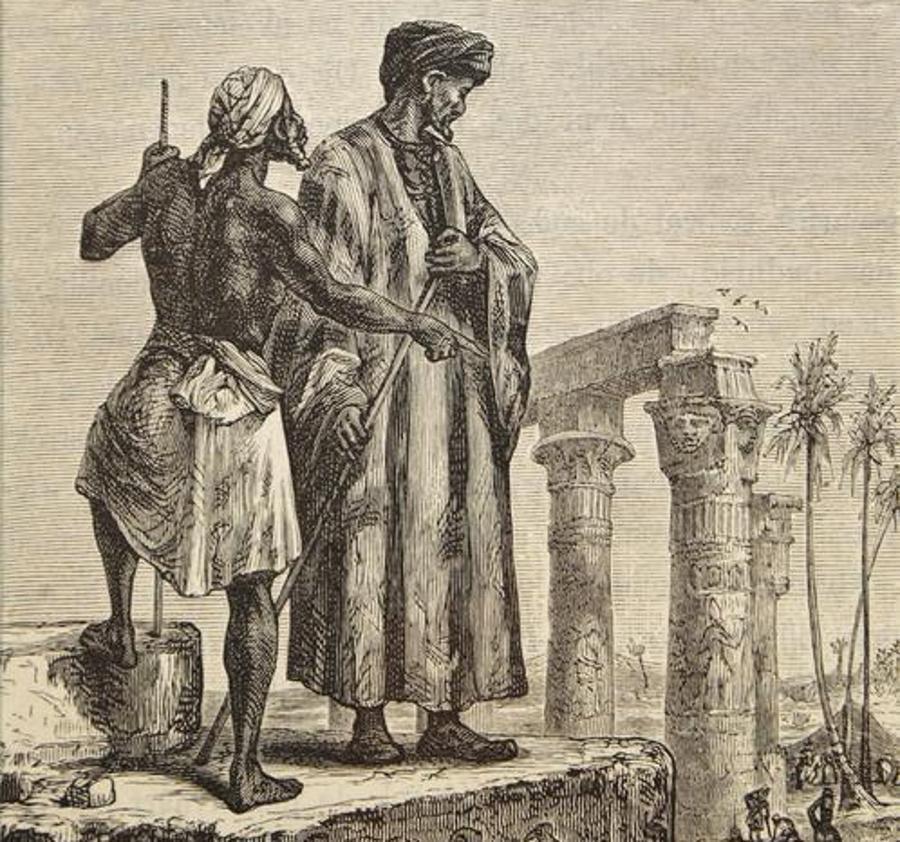
Source: Wikimedia
He continued, “One of their learned men told me that it is called ‘Haft Jûsh,’ which means ‘seven metals,’ and that it is composed of these seven. A part of this column, of a finger’s length, has been polished, and this polished part gives out a brilliant gleam. Iron makes no impression on it.”
New Study Attempts to Decode the Mysterious of the Iron Pillar
Despite the fascinating mysteries surrounding the iron pillar’s properties and origins, scientists maliciously analyzed the monument, hoping to uncover a simple explanation for its inability to rust.

Source: Freepik
Researchers from the University of Delhi conducted a study and published their findings in Applied Surface Science Advances, which may have finally solved the ancient mystery. “The pillar, renowned for its craftsmanship, flawless surface, and resistance to corrosion behavior, is a prominent monument demonstrating an indisputable record of the ancient Indian metallurgical and engineering marvel,” they wrote.
Advanced Levels of Metal Purification in Ancient India
The study authors detail one fascinating aspect of their research, explaining that the metal workers who constructed the monument managed to purify the iron to around 98%, which was unheard of during the era.
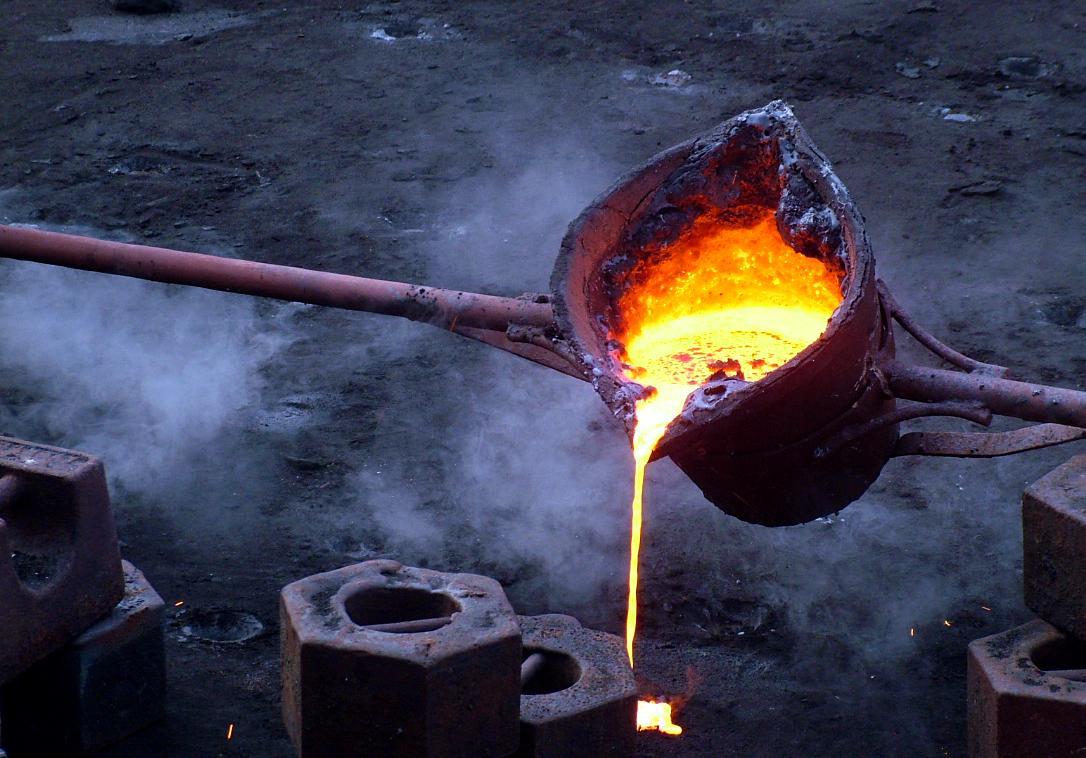
Source: Wikimedia
According to the scientists, the blacksmiths used extremely high heat, yet not so hot that it would melt the metal. It became a “soft spongy mass which was hammered to be shaped into the desired objects.”
Metal Workers Removed all Impurities in the Iron Pillar
The next step, according to the scientists, was to take the large lumps of extremely hot iron material and lay them out flat. They proceeded to hammer out all of the impurities, resulting in the monument taking on a “pancake” shape.
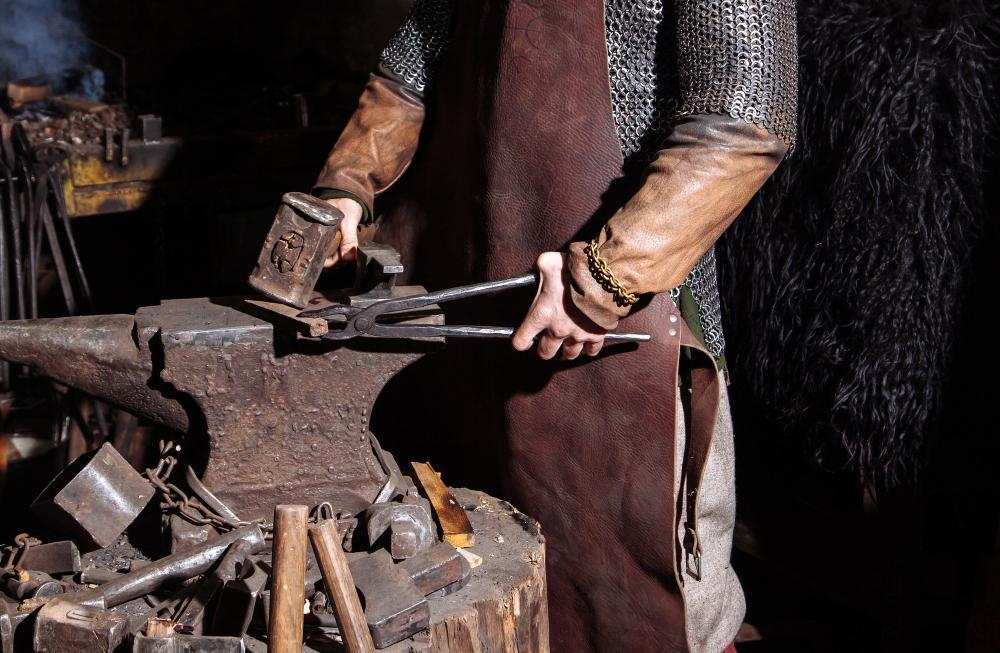
Source: Freepik
The study authors explained, “The heated iron pancakes were then placed one over another, and both were joined by hammering using hand-held hammers.”
Scientists Begin to Understand Why the Monuments is Resistant to Erosion and Rust
The researchers’ most important question was how the Delhi Pillar remained free of rust despite being created over 1,600 years ago. To solve this, they analyzed the microstructure of the Delhi Pillar.
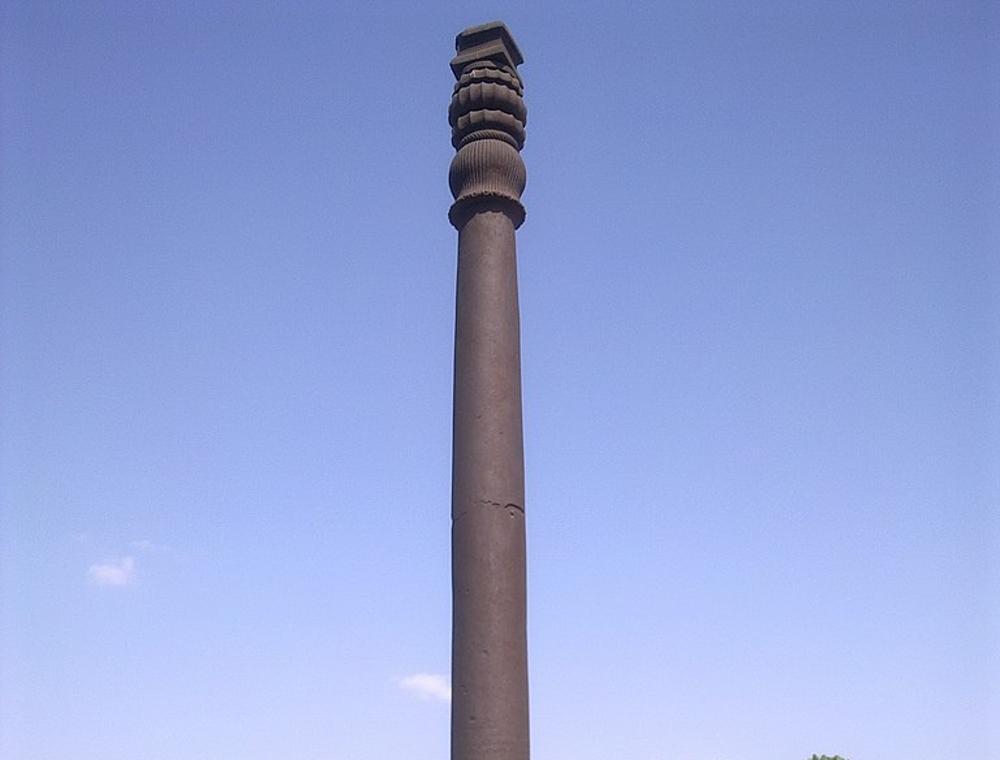
Source: Wikimedia
After maliciously reviewing the results of their tests, the scientists believe they figured out what exactly stopped the metal from rusting. “The corrosion-resistant property of the sample of Iron Pillar in Delhi was mainly due to the mode of its fabrication resulting in high slag inclusions dispersed in three dimensions around the metal,” said the authors.
The Dehli Pillars' Secret ingredient
“The corrosion-resistant property of the sample of Iron Pillar in Delhi was mainly due to the mode of its fabrication resulting in high slag inclusions dispersed in three dimensions around the metal,” said the authors.

Source: Freepik
They continued, “The P (phosphorus) present in FePO4 (ferric phosphate) is oxidized to phosphate, which acts as an inhibitor and promotes the formation of protective oxide films for preventing corrosion.
The Remarkable Achievements of Ancient Indian Metal Workers
So, while the theories of lost civilizations living in India can safely be put to bed, this shouldn’t diminish the great achievement of the ancient metal workers of India, who possessed knowledge far ahead of their time.
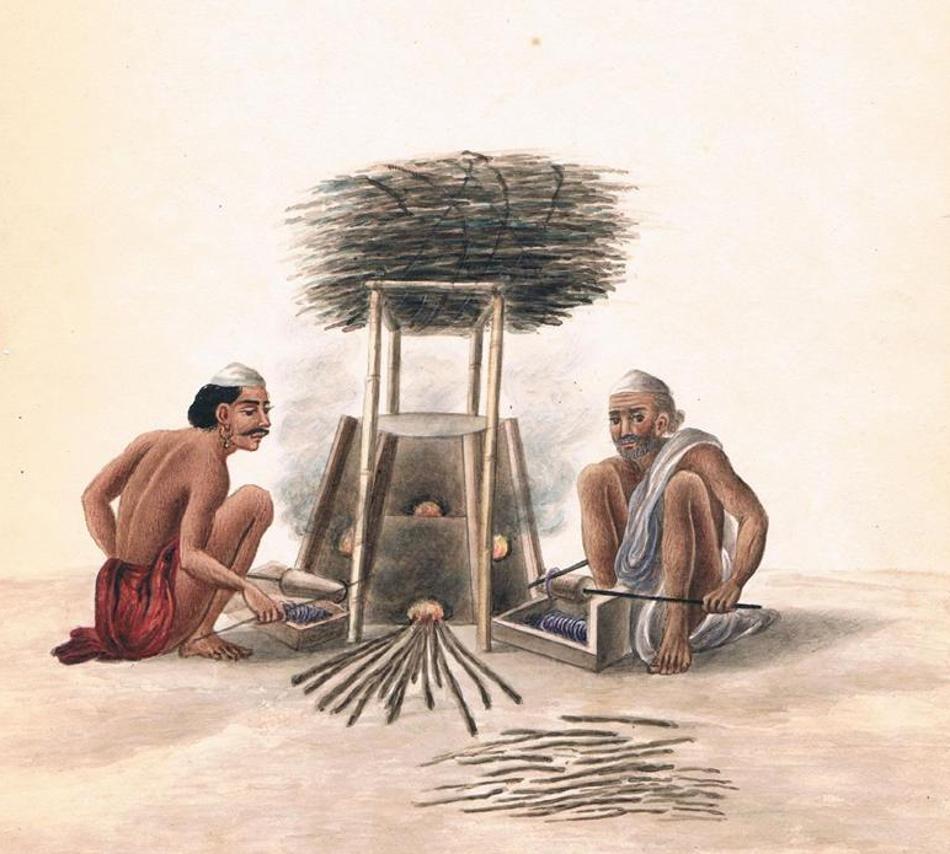
Source: Wikimedia
Delhi’s Iron Pillar is simply a display of Indian craftsmanship that went beyond the capabilities ascribed to the people of the era. Going forward, archaeologists may give more credit to the proficiency of ancient groups not only in India but around the world.
